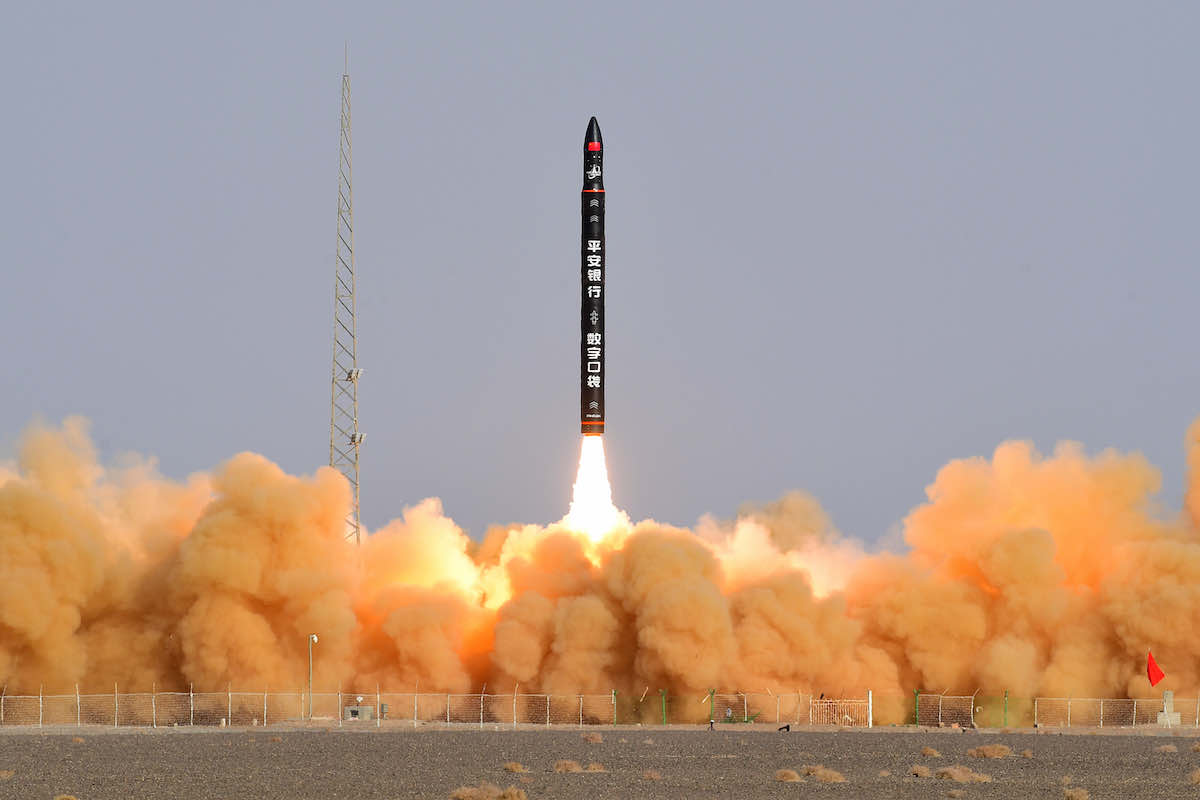
A solid-fueled Ceres satellite launcher developed to serve China’s burgeoning commercially-focused smallsat market successfully deployed five spacecraft into orbit Dec. 7, making the new Chinese rocket two-for-two since its debut last year.
The Ceres 1 rocket took off from the Jiuquan space base in the Gobi Desert of northwestern China. Operated by a privately-funded Chinese company named Galactic Energy, the four-stage launcher is designed to ferry clusters of small satellites into low Earth orbit.
Galactic Energy is one of several Chinese startups working with small satellite launchers, which proponents say offer cheaper, more frequent, and more tailored launch services than China’s larger Long March rockets. Chinese government and commercial enterprises are developing fleets of smaller satellites, taking advantage of advancements in miniaturized technology to meet needs in communications, remote sensing, weather monitoring, and science.
The Ceres 1 rocket is sized to carry a payload of more than 660 pounds, or 300 kilograms, to a 310-mile-high (500-kilometer) polar orbit, according to Beijing-based Galactic Energy. On its website, Galactic Energy says it “independent developed” the Ceres 1 launcher, which has a length of about 67 feet, or about 19 meters, and a takeoff weight of nearly 73,000 pounds, or about 33 metric tons.
Its lower three stages are solid rocket motors likely derived from missile stages developed for the Chinese military, and an upper orbital insertion stage features a hydrazine-fed propulsion system.
Galactic Energy’s second Ceres 1 flight blasted off from Jiuquan at 0412 GMT on Dec. 7 (11:12 p.m. EST on Dec. 6), according to China’s state-run Xinhua news agency.
U.S. military tracking data showed the rocket deployed its five satellite payloads into a polar sun-synchronous orbit around 310 miles in altitude, at an inclination of about 97.4 degrees to the equator.
The Ceres 1 rocket’s payloads included the Golden Bauhinia 1-03 Earth-imaging satellites developed by Beijing ZeroG Space Technology Co., Ltd., also known as ZeroG Lab, for Hong Kong Aerospace Technology Group. Another small imaging satellite, named Golden Bauhinia 5 and built by Zhongke Xingrui, also launched on the Ceres 1 rocket, according to Galactic Energy.
Also on the launch was an infrared imaging satellite named Tianjin Daxue 1 produced by Changguang Satellite Co. for Tianjin University. The other satellites on the mission were the Lize 1 scientific experiment satellite and the Baoyun spacecraft for Tianyi Research Institute. No details about those satellites were released.
The Ceres 1 rocket is a precursor to a larger launch vehicle under development by Galactic Energy called the Pallas 1, which will be powered by kerosene-fueled engines on a reusable booster designed for vertical takeoffs and vertical landings.
With the successful first Ceres 1 launch in November 2020, Galactic Energy became the second Chinese startup managed independently from the country’s legacy state-owned space contractors to send a rocket into Earth orbit. The Ceres 1 mission in 2020 followed the successful flight of the Hyperbola 1 rocket from iSpace in July 2019.
The inaugural Ceres 1 launch carried a single satellite into orbit. The second flight Dec. 7 showed the rocket can deploy multiple small satellites on the same mission.
The Hyperbola 1 rocket from iSpace has failed on its second and third flights. Other commercially-focused smallsat launchers have launched successfully one time.
The back-to-back flights with the Ceres 1 rocket makes Galactic Energy the only Chinese company in its market segment to achieve two successful launches in its first two attempts.
“This year, the company finally achieved the first consecutive successful launch of private rockets (in China), and also achieved a breakthrough in launching multiple satellites with one rocket,” said Liu Baiqi, CEO of Galactic Energy, in a press release. “It is one step closer to our commercial rocket industrialization goal.”
Galactic Energy said it plans up to five commercial launch missions in 2022. The next-generation Pallas 1 rocket is scheduled for its first orbital launch attempt in late 2022 or early 2023.
Email the author.
Follow Stephen Clark on Twitter: @StephenClark1.
from Spaceflight Now https://ift.tt/3EYaJTS
via World Space Info







0 comments:
Post a Comment